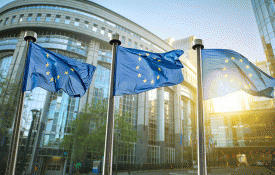Hollywood may still be the biggest global producer of English language content, but increasingly consumers of content live outside of the US. Some industry analysts estimate non-U.S. markets generate approximately 65% of the revenue Hollywood enjoys1 .
As if the dramatic shifts in content delivery (think YouTube, Netflix, viewing on mobile devices, etc.) were not enough to keep Hollywood wondering how to maximize revenue potential, Hollywood players also need to keep track of how regulatory regimes outside the US will impact content distribution.
To wit, on May 6, 2015, the European Commission published its digital single market strategy for Europe. The Commission’s aim is to enhance the use of digital technologies across Europe and to break down the barriers to online activity between European member states, with a view to stimulating the digital economy and creating growth and quality jobs. Currently, not a single market leader among Internet providers in the EU is European. The Commission’s view is that it is the only body capable of offering a joined up solution across the 28 EU member states to address this.
Of particular interest to U.S. content creators and content exploiters in the EU, the Commission has announced that as part of this strategy it will:
Harmonize European Copyright Laws to: (i) allow consumers to access content legally acquired in their home country when they are in another European Member State (“subscription roaming”); and (ii) facilitate access to legally purchased content in and from other European Member States (likely to be “passive selling” as with physical goods). Although the Commission has stated it respects the principle of territoriality as creating value for audio-
visual rights, the concern for content owners and those that finance content is that to maximize revenue, content is usually licensed on a territory by territory basis. Rarely is content delivered or released throughout the EU at the same time, due to different cultural norms, and regulations as to windowing.
[To read more of Lisbeth Savill’s thought leadership click here]
End “Unjustified” Geoblocking Within Europe to give consumers access to websites across Europe and to end differentiated pricing structures based on geographic location. This is aimed at all e-commerce sites but will impact not only the sale of physical goods but also streamed content. Will this only favor the interests of the U.S.-based giants Netflix, Amazon, and Google which can offer goods and services across the EU?
The Commission has suggested that geoblocking on a territorial basis as a mechanism for financing audio-visual content cannot, as such, be considered unjustified. Herein lies some confusion as to how this potentially “justified” geoblocking will sit with its other proposals, including the harmonizing of copyright laws. Will pre-sales of films to local distributors decrease? Will ending “unjustified” geoblocking enhance EU cultural diversity, as the Commission has stated, or will the impact be the opposite?
“As the lines between television and television-like services are becoming increasingly blurred, the scope of the Directive does need to be addressed but it may mean a service like Netflix or Amazon Prime could become more regulated, akin to an EU broadcaster.”
Review the Audio-Visual Media Services Directive to adapt it to the digital age, with particular emphasis on creating a level playing field between broadcasters and online video on-demand platforms with respect to promoting European works. The Commission will consider whether the Directive’s current scope should be broadened to include new services and providers that fall outside the definition of “audio-visual media services” or outside the Directive’s geographical scope. As the lines between television and television-like services are becoming increasingly blurred, the scope of the Directive does need to be addressed but it may mean a service like Netflix or Amazon Prime could become more regulated, akin to an EU broadcaster.
Access the Role of Platforms in Tackling Internet Piracy to analyze whether new measures are required and whether intermediaries (i.e., the platforms) need to exercise a duty of care in the way they manage their systems, including their take-down procedures.
The takeaway from the EU digital single market strategy is that these are only proposals and are not yet law. However, the Commission has undertaken to deliver on all of its proposals over the course of the next 18 months. During that period, it is worth watching developments closely – and indeed some readers may find they are asked to cooperate with the EU’s e-commerce sector enquiry which was launched at the same time. The ultimate result is likely to be a considerable change in the way content is distributed in the EU, with a resulting impact on current licensing regimes and contracts.
1 boxofficemojo.com
[For more on Latham & Watkin’s approach to Entertainment click here]










































